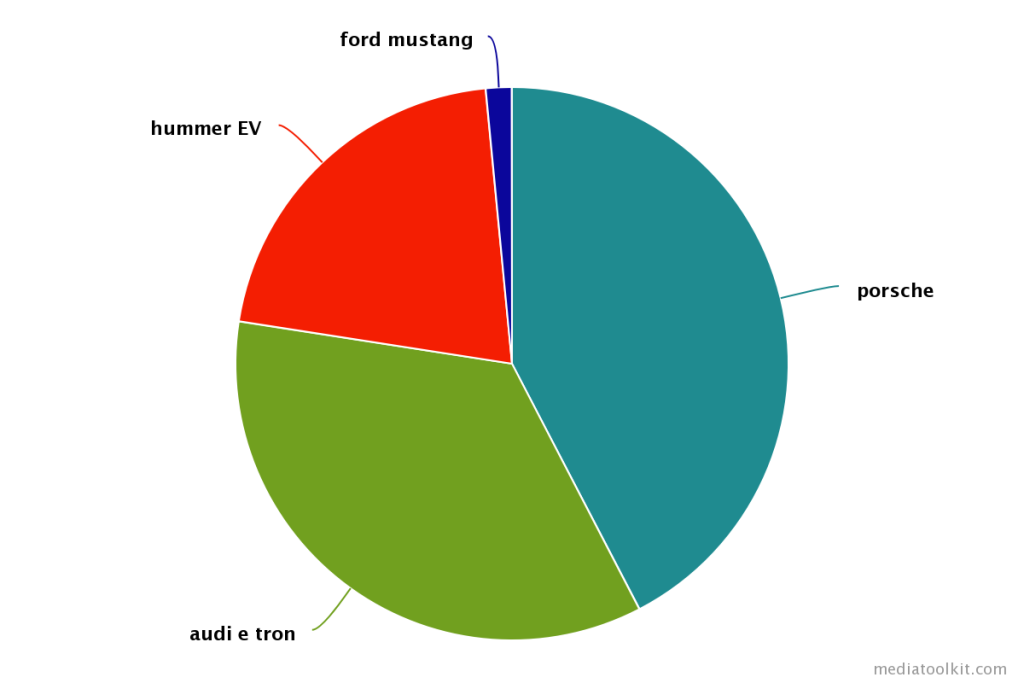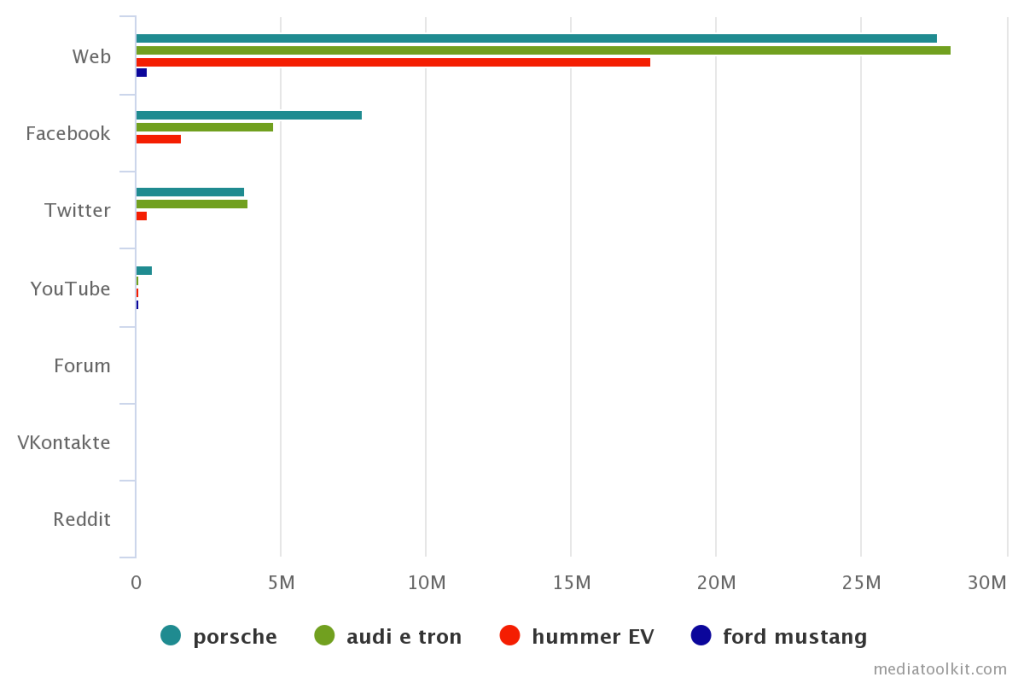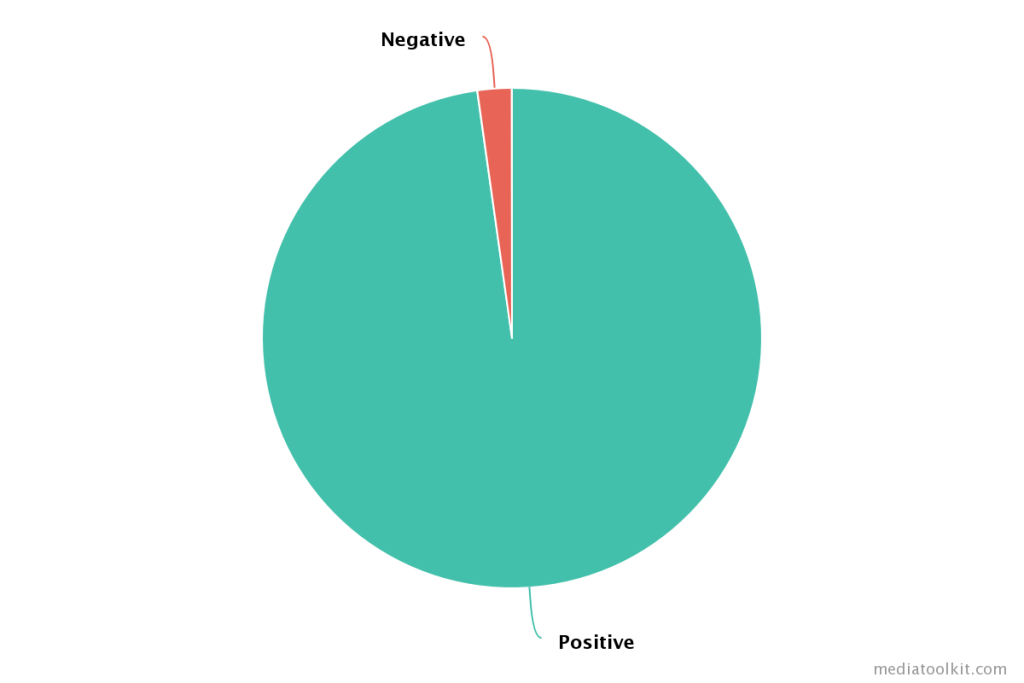As is the norm, after Super Bowl commercials air, reviews come pouring in. Both by social media users and media outlets. Everyone pitches in with their two cents, and car commercials are not exempt from this scrutiny. In 2020, automotive marketing took up eight ad spots, and while less than a year before, it left them more room to shine. And see a lift in traffic activity.
It’s important to know that 97% of people looking to purchase a car start their journey online. These automotive marketers knew how to attract people’s attention and pull them in enough to start looking up more information.
Still, what was really interesting about last year’s automotive industry ads is the visible shift to promoting a more sustainable future. Hence the ads featuring electric vehicles (EV). Out of the eight automotive ads last year, half of them were for electric vehicle models.
The Super Bowl ads for electric vehicles were not a common occurrence and it’s rare to see one, let alone four of those ads featured during Super Bowl. As a matter of fact, there were only a total of three Super Bowl ads for electric vehicles in the last ten years.
However, last year set a precedent. And 2021 further confirmed it.
Automotive giants want people to start realizing electric cars are the future. The question is, are people ready to listen?
2020 Super Bowl automotive marketing: The 4 electric vehicle commercials
Four car companies debuted their electric vehicle models during Super Bowl: Audi, Porsche, Ford Mustang, and, probably most surprising of all, GMC’s Hummer.
It just goes to show the rising importance and relevance of electric vehicles, that big-name car companies set aside millions of dollars to raise awareness of their upcoming EV models. After all, Super Bowl is one of the biggest sporting events, attracting millions and millions of viewers every year.
“Let’s drive toward a more sustainable future” wasn’t just Audi’s tagline but it seems to be the general message car companies wanted to send this year.
Another novelty was the very concept of ads. Moving away from introducing EV models as something people have to transition to in order to “save the Earth”, these car companies introduced EV models as something people want to have. Modern, sleek, fast, and beautiful seemed to be the undertone of every ad.
Porsche especially hammered down this message by claiming their electric car as better and more desirable than its older models: illustrated by the EV taking a lead in a car chase with different Porsche models.
Game of Thrones’ Maisie Williams implored you to “let it go” in an Audi ad, using Disney Frozen’s famed song to emphasize the importance of letting go of the (gas-guzzling) past and looking forward to a future of electric vehicles.
And GM, who in the past dropped Hummer due to its fuel-emissions issues, surprised the public by now introducing its electric vehicle model which many immediately started comparing to Tesla’s Cybertruck. Even though Hummer boasts a “quiet revolution” in their commercial, I’d say theirs was more of a loud one.
And last, but not least – Ford re-ran its ad for Mustang (aired before the Super Bowl) featuring actor Idris Elba as he narrates: “And just when you think you know where they’re going, they do something unexpected, something that moves us all forward and holds nothing back.”
So, how do you advertise electric vehicles?
Send a message that resonates. Don’t preach – make your audience want to consider switching to an electric vehicle by highlighting the benefits. Don’t push them towards the switch to an electric model, but rather create a story that pulls them in and gets them talking. Electric cars don’t have to be only a safe and boring choice, so don’t advertise them as such. They can be fast, bold, beautiful and spark conversation.
These four companies have sparked the conversation. Don’t look back, but rather move forward – toward a new future. One that is more sustainable than the world we’re living in now.
Still, the question remains: how did the audience respond to that message?
Read Automotive Marketing for Beginners: All You Need to Know
Online analysis of Super Bowl electric vehicle ads using Determ
Over the two days since the ads aired, they’ve accumulated a total of 5 082 mentions and an impressive number of 97 432 632 impressions.
If you take a look at the share of voice chart, you’ll notice that Porsche and Audi’s ads were the most talked about. 42.4% of all mentions were about Porsche’s ad and 35.1% about Audi’s ad.

The most popular source seems to be the web, which makes sense because many media portals took to analyzing the Super Bowl automotive ads – many of which took notice of the importance of these new EV models.

The sites whose articles were the most influential among all four ads seem to be the New York Times, Chron and TechCrunch.
Right after the web, most mentions were on social media sites Twitter and Facebook. Again, it only makes sense that people also ran their own commentary on the aired ads. Twitter especially seems like the most popular way of expressing one’s opinion, and it’s no different in this scenario, as it’s the second most popular source.
The sentiment surrounding these ads is overwhelmingly positive.

People seem to be rather accepting and enthusiastic about the future of the automotive industry.
Here’s what they’re are saying:
Many also took to comparing these new EV models to Tesla. Not only that, but many seem of the opinion that these ads were indirectly helping Tesla, too – as they’ve raised general awareness around the electric vehicles.
On the other hand, for some, GMC’s Hummer EV raised eyebrows. Some were wondering who’s that car even for…
…and some were just plain confused:
Some even called out Audi for their not-so-clean past:
What does it all mean?
Despite some of these comments questioning the car companies’ legitimacy, the sentiment still remains dominantly positive. What’s more, people seem to be accepting of these new electric vehicle models.
However, one can’t help but wonder if acceptance and enthusiasm are enough to raise EV sales? Are they enough to change the direction of the automotive industry and marketing?
Until 2020 the electric vehicle buyers were few and far between. In 2019 carmakers sold a little more than 300,000 electric vehicles in the US, which is less than in 2018. However, the global sales of electric vehicles accelerated in 2020. The sales increased by 43%, coming up to more than 3 million – even when the overall car sales decreased during the coronavirus pandemic. As The Guardian reported:
“The rising sales are being driven by government policies to reduce carbon emissions, but a key factor is that electric cars are simply a better technology, said Viktor Irle, sales and marketing analyst at EV-volumes.com.”
The general mindset is shifting and with it the ways automotive marketers are approaching advertising. Be it mandated by the government policies or increasingly environmentally-conscious audiences, the automotive industry’s marketing efforts have started to reflect that demand for sustainability.
Marketing requirements are more sophisticated now than ever and rely on big data inputs and variable processes. Without altering processes, marketing teams stand to drown in that influx, a disaster they can only really avoid by implementing the correct tools.
With the ability to simplify processes, unify programs, and generally overcome setbacks, the best tools out there are now a non-negotiable marketing team staple. But, what tools are most worth your attention?